Uk Marine Corps Drone Concept
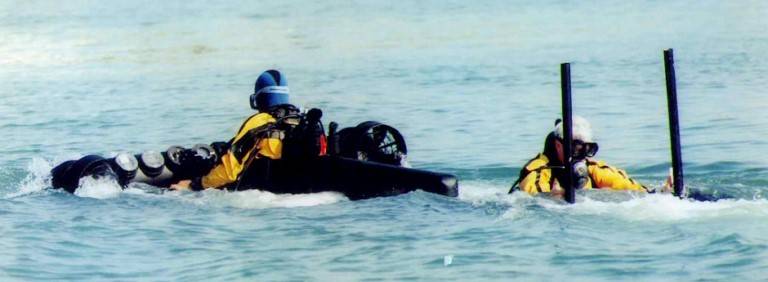
Wars of the future involve the conduct of warfare using robotic or remotely controlled equipment and weapons with minimal involvement of personnel.
It is in light of this concept that the UK Department of Defense recently issued a preliminary notice for the purchase of a unique type of vessel to assist the commandos of the Royal Marines. The document describes it as "Unmanned surface and submarine vessel" (USSV). According to the notice, the vessel should be multipurpose, have a low signature and great autonomy. The following is an excerpt from this website notice Widstats.
701579481 - Unmanned surface and submarine vessel (USSV)
Advance notice to the Department of Defense
Source: Search for contracts
Type: Futures contract
Duration: not specified
Value: not specified
Sector: PROTECTION
Published: 10 September 2021
Concepts
• Royal Marine Corps
• ship
• surface
• submarine
• naval strike network
• police and defense equipment
Description
The Royal Marines are demanding the development of a multipurpose, stealthy, durable unmanned surface and submarine vessel (USSV). This will provide hidden capabilities, both on the surface of the water and underwater. The vessel must have a low visual signature when on the surface and be fully autonomous when integrated into a naval strike network. It must be very flexible, capable of several types of tasks, including the deployment of sensors and actuators, as well as the ability to strike, both from the surface of the water and underwater. The survey of the operational area by this vessel will assist the Royal Marines in future operations.
The ship should be able to withstand long endurance missions with the ability to stay in "standby" mode, be able to turn independently at high speed, have an increased cruising range and demonstrate high maneuverability.
At the same time, the platform will be easy to maintain, repair and update. It must have full interoperability with launching and recovery equipment for current / future shipments. It can also be transported in a 40-foot ISO container.
The platform design must demonstrate a certain degree of maturity through the use of proven and demonstrated technologies.
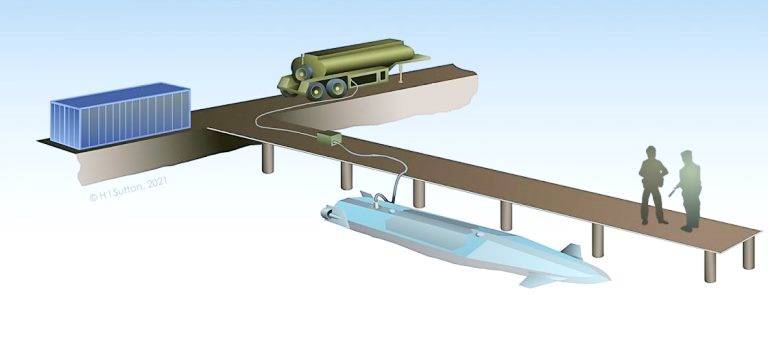
Thus, the basic concept of an autonomous vessel should have the characteristics of a bareboat submarine that can operate on the surface for an extended period of time, as well as under water.
Similar concepts, but with manned vehicles, can be found in special operations missions. But the emphasis on unmanned operations sets it apart from the widely used manned options. The document touches upon possible targets, but lists sensor deployments and impact capabilities, both from the surface of the water and underwater, as examples. That is, they plan to equip the transporter with mines, cruise missiles or torpedoes for various purposes.
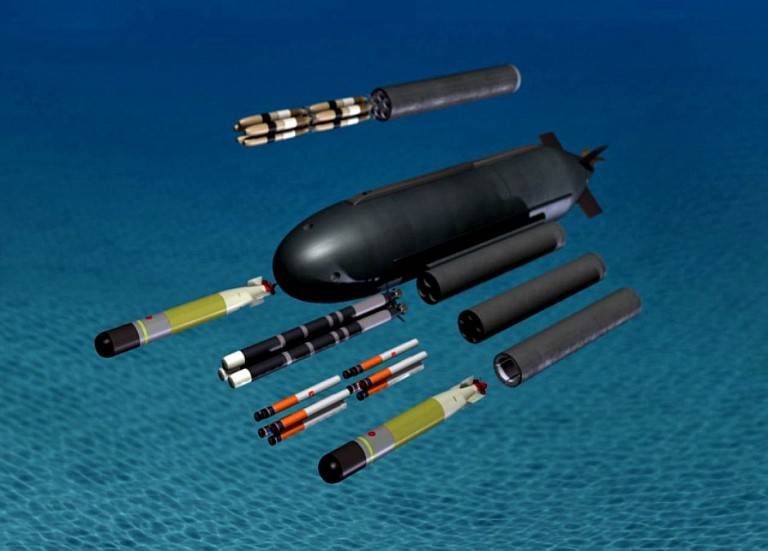
The system under development is part of the so-called maritime strike network.
The network is based on a combination of strikes from different types of unmanned vessels, such as unmanned surface vessels (USV) and unmanned underwater vehicles (UUV).
Now they will be joined by a hybrid USSV.
This type of vessel is also inherently suitable for tasks such as ISR (reconnaissance, surveillance and reconnaissance). They can also carry various goods. The latter may be especially true if the Marine Corps unit finds itself in remote forward bases or if the environment is too dangerous to resupply from the air or by sea.
The USSV will be carried by larger vessels that can launch and take back the system, according to the plan presented. These can be specialized amphibious warships or almost any transport vessel capable of carrying a boat. However, the USSV must be compact. The document states that it must be small enough to fit in a standard 40 'shipping container. That is, the length of the vehicle should not exceed 10 m. This requirement makes the system especially useful for direct deployment, but limits the size of the payload.
As noted by the Navy, the USSV is part of a broader reform of the Royal Marines. On 23 March this year, the British government announced that the Royal Marines would be reorganized into the Future Commando Force (FCF). This is a shift from the traditional role of an amphibious infantry to a commando unit capable of performing special operations. While the bulk of the force is currently on alert in the UK, in the future they will be largely deployed in forward positions. The USSV can play a key role in this new and more flexible force structure.
At this stage, the UK is in an unusual position to choose the solution to the technical problems of the project. There are several specialized shipbuilders who have already built special operations submarines. And they are usually already exploring autonomous possibilities. These include companies such as JFD, Ortega and Marine Specialized Technology Group (MST).
For example, JFD offers the Seal Carrier type submarines to the market.
Carrier Seal is a transport vehicle designed for 8 combat divers and designed for the covert delivery and evacuation of combat diving units. The platform operates in three modes: being on the water surface, semi-submerged and submerged.
Carrier Seal vehicles cross the water surface at speeds of up to 30 knots and then switch to underwater mode to covertly enter the area of operation at 4 knots.

Use cases for Carrier Seal include:
- Delivery of a battle group of 6 people.
- Host platform for autonomous underwater vehicles.
- Remote controlled weapon platform.
- Harbor patrol ship.
- Ship of rapid response to piracy.
- Mine action.
The built-in breathing system of the device gives additional safety to divers and allows to increase the operating range under water.
On board the ship there are several means for quickly attaching various weapons systems, which turn the ship into a real combat unit.
Onboard sensors and navigation systems ensure safe passage and accurate positioning of the platform day and night, above or below the surface of the water, regardless of vehicle speed or environmental conditions.
In addition to divers and their personal gear, Carrier Seal accommodates additional operational equipment such as sensor and radio equipment, ammunition and explosives, emergency equipment and supplies. For operations requiring extended range, the vessel can carry additional fuel stored in a separate fuel tank or additional batteries.
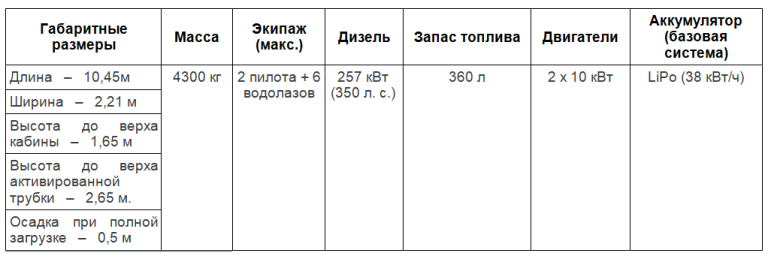
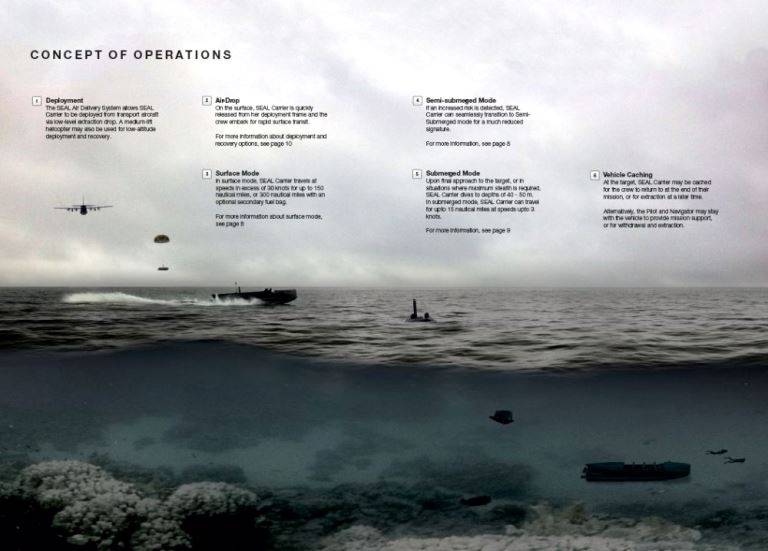
Carrier Seal's two propulsion systems are engineered to provide optimum performance, whether it moves on the surface of the water or silently when fully submerged.
Surface Mode
In this mode, the Carrier Seal is powered by a water cooled diesel engine and a Rolls Royce water jet. Together they provide excellent maneuverability. The water jet is independently controlled and independent of other hydraulic systems on board.
Diesel fuel is stored in a special 360 liter flexible fuel tank located in front of the engine compartment. It is also possible to install a second additional fuel tank to provide Carrier Seal with a range of up to 300 nautical miles.
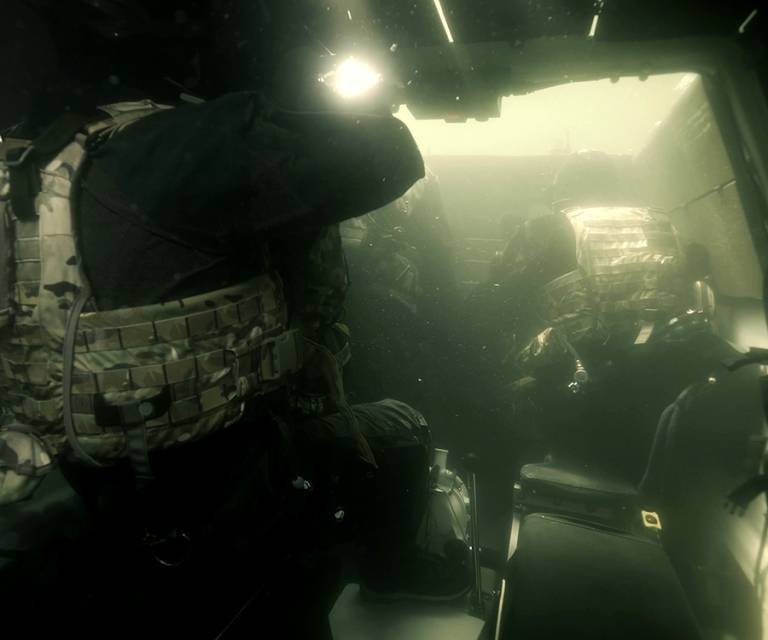
Semi-submersible mode
To reduce the visible, acoustic and radar signature of the Carrier Seal, the vehicle can be operated in semi-submerged mode.
In this mode, the diesel engine and water cannon remain the preferred propulsion system and can reach sprint speeds of up to six knots. The typical cruising speed of a vehicle in this mode is four knots.
If required, an electrical propulsion system can be used, which is typically intended for subsea use.
Air intake is via a hydraulically driven tube. The navigator can lift the tube up to a meter to avoid water ingress. Sensors inside the snorkel seal the engine capsule and prevent the diesel engine from starting if water is detected in the air intake system. When the tube is not in use and in surface mode, it is flush with the superstructure.
Underwater mode
The power plant of the conveyor is enclosed in a stainless steel housing in which a constant pressure is maintained. This allows Carrier Seal to transition smoothly into submersion mode.
When operating in surface and semi-submersible modes, the diesel engine and on-board generator charge the lithium polymer batteries.
In subsea mode, these batteries provide power to two electric thrusters mounted on the vehicle's transom. This propulsion system provides Carrier Seal with an underwater range of up to 15 nautical miles at speeds up to five knots. Typical underwater cruising speed is three knots.
Additional batteries can be installed if required to increase range and fully submerged life.
JFD also owns the Dutch company Ortega, which offers its own range of submarines.
This Ortega acquisition will enable JFD to further expand its range of advanced swimmer delivery vehicles (SDVs) and develop new vehicles and capabilities to meet the growing market demand for specialized small and medium craft.
JFD, through its subsidiary JFD Ortega BV, will retain Ortega's office and manufacturing facilities, as well as its entire design and engineering team, at its manufacturing base in Enschede, The Netherlands.
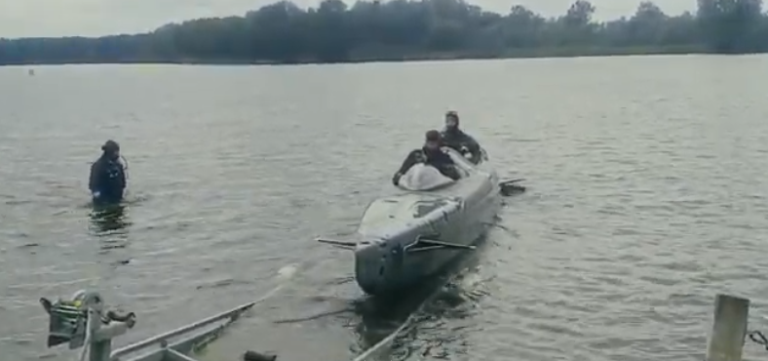
JFD will also add capacity based in Vaxholm, Sweden to its existing SDV capacity and expand its offer to include new vehicle designs that will enable SWAT operators to safely perform hidden complex missions.
Giovanni Corbetta, managing director of JFD, said:
SDV JFDs primarily exist to facilitate the safe entry and exit of special operations forces and equipment. They have been designed with the needs of today's operations in mind, allowing us to offer the navy a wide range of vehicles for different types of missions and deployment methods.
With our acquisition of Ortega Submersibles, we will be able to expand our SDV offering, especially for small and medium sized all-electric boats, so that SWAT personnel have the means to safely enter and exit any operation and to meet any mission requirements. The partnership will enhance synergy between the two companies. "
The enhanced SDV JFD range is specifically designed to facilitate the safe delivery and return of special forces and their equipment by ships of various types, giving the navy the ability to safely deliver frogmen to the intended "entry point" at a high level of readiness.
In all JFD SDVs, operators are protected from incoming water flow, which allows them to retain body heat from the effects of cold water temperatures. This minimizes physical activity during the delivery or return of fighters and ensures that they will fatigue much less.
Development, testing and testing of the existing JFD SDV line was carried out in the Stockholm Archipelago, the Baltic Sea, Portland Harbor and off the west coast of Scotland. Fully tailored to customer requirements, transporters combine Sweden's commitment to safety-oriented design and a shipbuilding heritage. All of this is backed up by a unique production experience with the participation of divers at all stages of this process. The expansion of the facility through the acquisition of manufacturing facilities and a team in Enschede will enable JFD to continue to build on this legacy.
JFD provides advanced SDVs to a number of renowned naval forces. As a recognized provider of capabilities and operating around the world, JFD has a broad portfolio of products, services and aftermarket solutions for the defense industry, including Special Forces, Law Enforcement, Counter Terrorism, Maritime Defense, and Mine Action.
Thus, the Mk.1D, which differs from the previous Mk.1 with increased cargo space, 4 seats and a modular design, better suits the needs of military operations, while maintaining speed and range at an acceptable level.
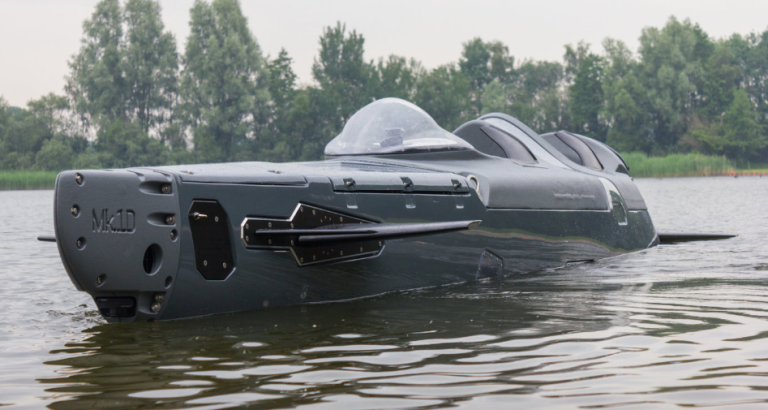
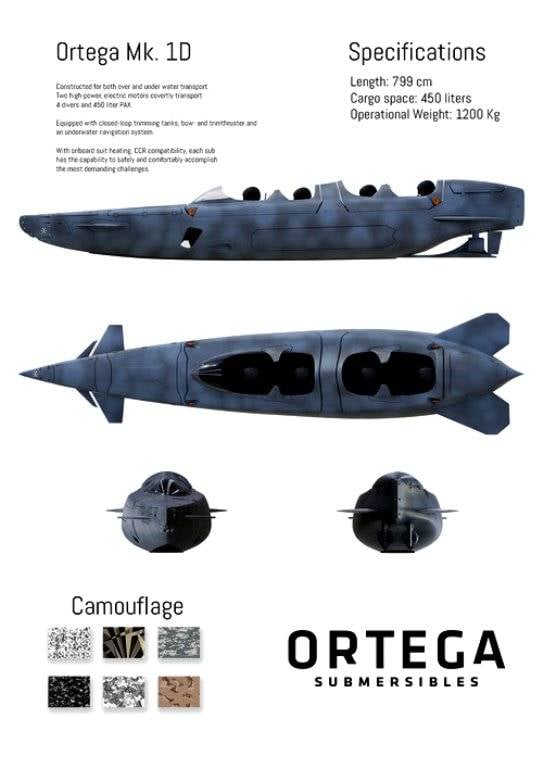
The second contender for the future unmanned vehicle is the Marine Specialized Technology Group (MST) from Liverpool. The company creates the long-established SubSkimmer family of submarines.
According to the MST website, Special Products offers modular systems that can transform any MST vessel into an unmanned or autonomous ground (surface) vehicle.
Unmanned surface and submarine vessels have a wide range of military and commercial applications, including reconnaissance, mine action, anti-submarine, patrol and surveillance.
Today, the SubSkimmer family is arguably one of the most innovative submarines ever built to penetrate foreign waters. They combine the characteristics of a rigid inflatable boat (RIB) with an underwater scooter and are more perceived as a submarine rather than a typical combat swimmer's delivery vehicle.
SSK-680
One of the latest developments of the MST, put into service in the early 2000s. The 6,2 m long submersible belongs to the 4th generation vessels and is also specially designed for special operations forces where discreet transportation is important. It features a much more hydrodynamic hull, which is made of fiberglass with an underwater propulsion system. This transporter is well equipped to deliver personnel and materials to the target of interest.
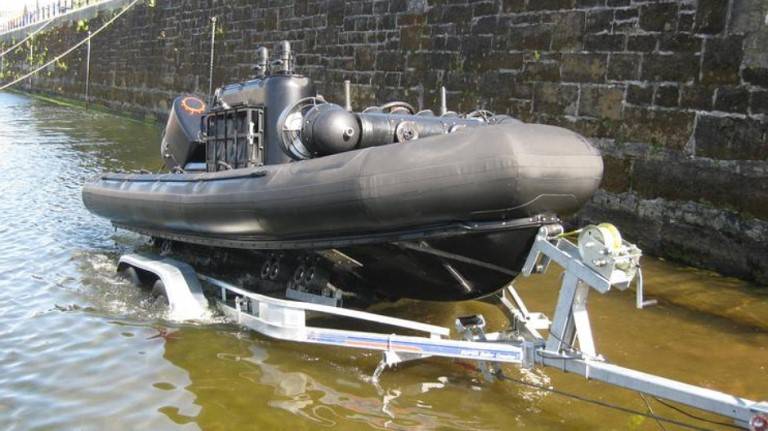
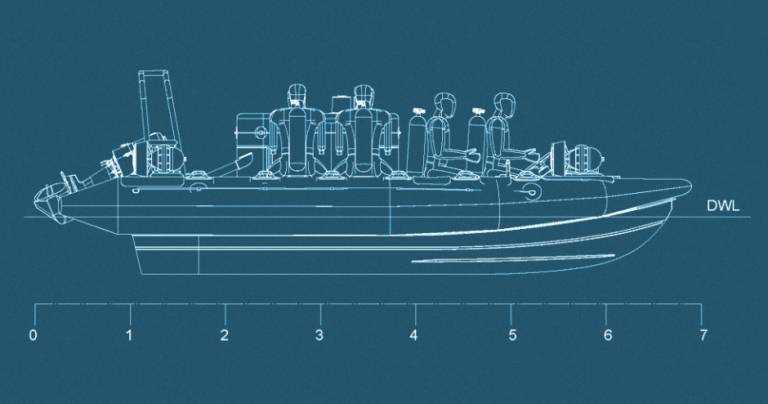
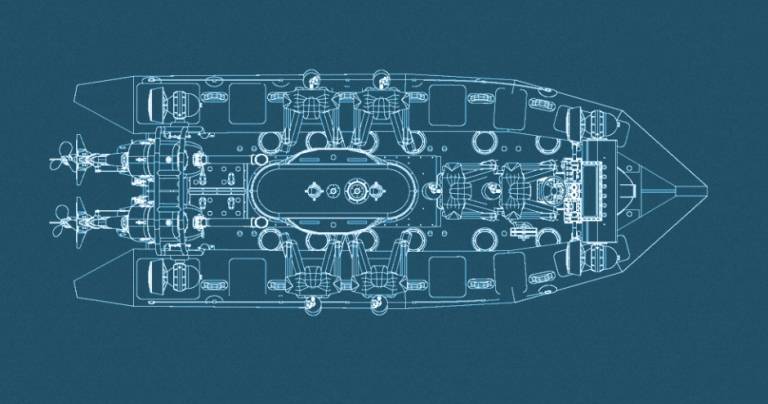
SSK-1100
The latest generation ship developed by MST is significantly more powerful than previous versions. Currently still at the prototype stage. But with a high degree of probability, it is he who can become a platform for the future unmanned vessel.
New entrants such as SubSea Craft and Defense Submersibles International are also offering submarines of their own design.
For example, SubSea Craft offers its latest VICTA class Diver Delivery Unit as a platform for a future unmanned vehicle.
In addition, it is very versatile - it can be deployed from a variety of platforms, from a road trailer to a heavy helicopter or a cargo plane. And all this without using expensive strategic platforms. VICTA is also a digital platform offering the ability to leverage data from countless systems and sensors both inside the ship and outside with many benefits. "
- said Tim Chicken, Chief Commercial Officer of SubSea Craft, in an interview on the Naval News website.
At the moment, a VICTA-type vessel is capable of speeds of over 30 knots, has a range of 250 nautical miles, and the transition between surface and underwater modes takes less than 2 minutes. The carrier can accommodate eight operators of the naval special forces and their equipment. In the future, the combat swimmers' compartment can be used to accommodate unmanned control equipment, additional supplies of fuel, weapons, reconnaissance or other equipment.
It should be noted that this concept is also applicable not only to units of the Marine Corps and fleet Great Britain, but also to the Navy around the world. At the same time, the naval forces of some countries in this direction are ahead of the development of the British.
So, Boeing and Lockheed Martin, commissioned by the US Navy, have been working on a similar unmanned vehicle since 2019. Boeing is developing the Orca super-large underwater vehicle, which will be capable of carrying cruise missiles, torpedoes, and mines. Apparatus of this type will be capable of performing reconnaissance and surveillance missions, as well as mine action.
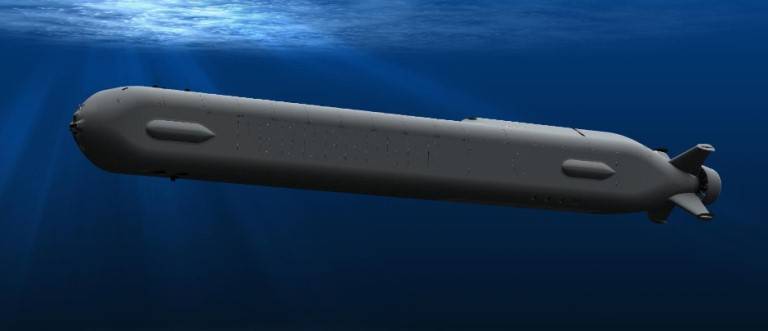
The US Navy is currently using the Proteus hybrid vessel, which can operate as a conventional SDV (swimmer delivery vehicle) with a pilot and navigator, or as a large displacement unmanned underwater vehicle (LDUUV). In fact, it can operate in both modes for the same task, providing unparalleled operational flexibility.
The combination of large interior volume, enhanced navigation and high reliability also means it can be used as an underwater truck, covertly delivering packages (including passengers, equipment or ammunition) to teams working in the field or in high-risk locations. Along with the roles, SDV Proteus is also offered for various mine protection purposes. It's this autonomous ability that sets him apart from the rest, at least for now.
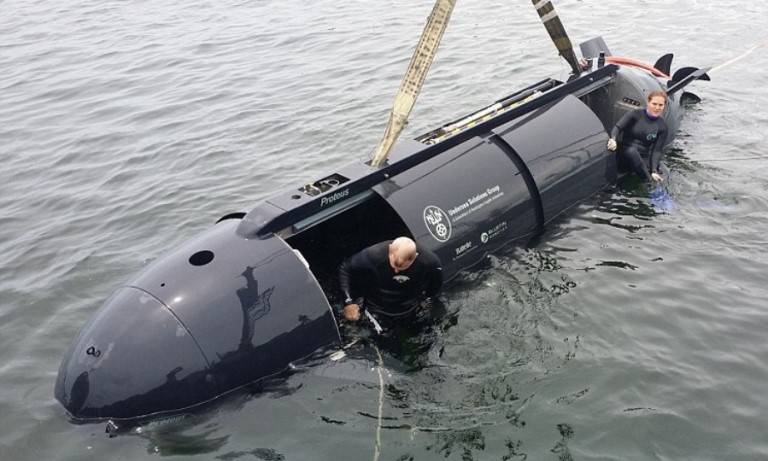
In the Russian Navy, a similar vessel is the autonomous underwater vehicle (APA) "Harpsichord".
Work on it began in 2015 at the Rubin Central Design Bureau. According to Igor Vilnit, General Director of the Rubin Central Design Bureau,
Technical characteristics of the APA "Harpsichord": length - 6,5 m, diameter - 1 m, weight on land - about 3 kg, cruising range - 700 miles, working depth - 27 m.
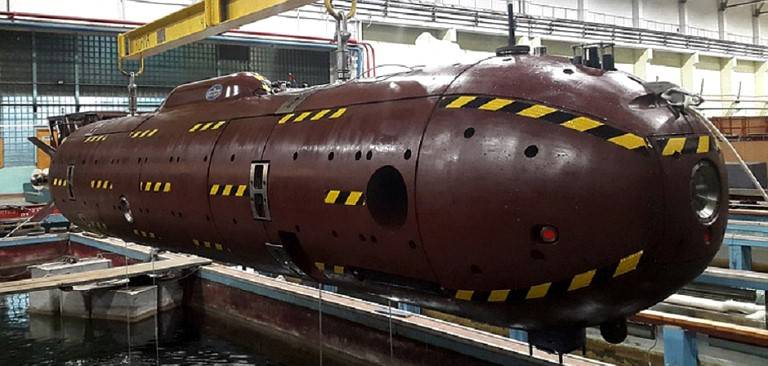
Thus, looking to the future, the Marines and the British Navy are actively working on the development of "autonomous systems" and trying to expand the role of unmanned vehicles by integrating them with other platforms and systems in future mine action and high risk operations. personnel.
These devices can also provide important information for the protection of naval bases or naval forces on a campaign. At the same time, unmanned systems in all areas of operation are becoming the basis for building an integrated intelligence, surveillance and reconnaissance (ISR) architecture.
The data obtained from this architecture are key elements of the concept of "Sustainable and pervasive knowledge dominance in and beyond the coastal combat space".
Information